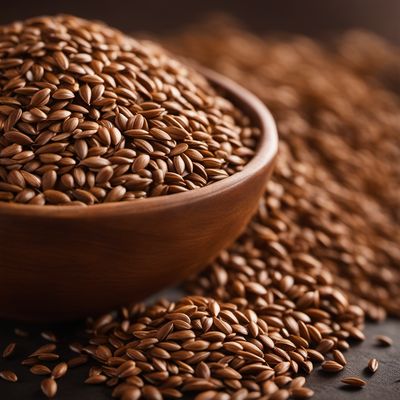
Ingredient
Linseeds and similar-
The Mighty Linseeds
Linseeds are small, oval-shaped seeds with a shiny, smooth texture. They have a nutty flavor that intensifies when toasted or ground. The seeds are typically brown or golden in color, and their outer shell is hard and fibrous.
Origins and history
Linseeds have a long history dating back to ancient civilizations, where they were cultivated for their versatile uses. They were highly regarded for their medicinal properties and were used in traditional remedies. Today, linseeds are widely consumed for their nutritional benefits and culinary versatility.
Nutritional information
Linseeds are a nutritional powerhouse, rich in omega-3 fatty acids, fiber, and lignans, which are beneficial for heart health and hormone balance. They also contain essential minerals like manganese, magnesium, and phosphorus.
How to select
When selecting linseeds, look for packages that are tightly sealed and free from moisture or signs of damage. Opt for organic or non-GMO varieties whenever possible to ensure the highest quality and purity.
Storage recommendations
To maintain the freshness of linseeds, store them in an airtight container in a cool, dark place, such as a pantry or refrigerator. Whole linseeds have a longer shelf life compared to ground linseeds, which can turn rancid more quickly. It is best to grind linseeds just before use to preserve their flavor and nutritional value.
How to produce
Linseeds can be easily grown at home by sowing the seeds in well-drained soil and providing adequate sunlight and water. They can be harvested when the plants start to dry out and the seeds turn brown. Once harvested, the seeds need to be dried thoroughly before storage.
Preparation tips
Linseeds can be used in a variety of ways, such as sprinkling them over salads, yogurt, or oatmeal for added crunch and nutrition. They can also be ground into a fine powder and used as an egg substitute in vegan baking or as a thickening agent in soups and sauces. Additionally, linseeds can be soaked in water to create a gel-like substance that can be used as a binder in recipes.
Substitutions
Chia seeds can be used as a substitute for linseeds in most recipes, as they share similar nutritional profiles and culinary uses. However, chia seeds have a slightly different texture when soaked in liquid compared to linseeds.
Culinary uses
Linseeds are commonly used in baking, particularly in bread, muffins, and granola bars, to add texture and a nutty flavor. They can also be incorporated into smoothies, energy balls, and homemade crackers. Additionally, ground linseeds can be used as a gluten-free alternative to breadcrumbs for coating meats or vegetables.
Availability
Linseeds are cultivated and consumed worldwide, with major producers including Canada, China, Russia, and India.
